In busy clinical environments, how medicines are stored isn’t just about convenience – it’s about saving time, preventing mistakes, keeping patients safe and also maximising budgets. When medications are poorly organised, it can lead to dangerous errors, wasted time, and unnecessary stress for staff. Not to mention out of date products also leading to wasted spend.
The Benefits of Organised Medications
An organised medicine storage system brings a host of advantages, including:
- Improved Patient Safety: Reducing the risk of incorrect medications being administered by ensuring clear, logical storage.
- Increased Efficiency: Faster retrieval of drugs during critical situations, saving valuable time.
- Better Inventory Management: Easier stock checks, reducing overstocking and minimising waste.
- Enhanced Staff Confidence: A well-structured cabinet reduces stress and confusion for healthcare professionals, supporting safer dispensing.
- Sloping and telescopic shelves: Allowing easy access to medications at the back of the cabinet, reducing the risk of forgotten or expired stock. This supports more effective stock rotation, ensuring older medications are used first, minimising waste and unnecessary reorders.
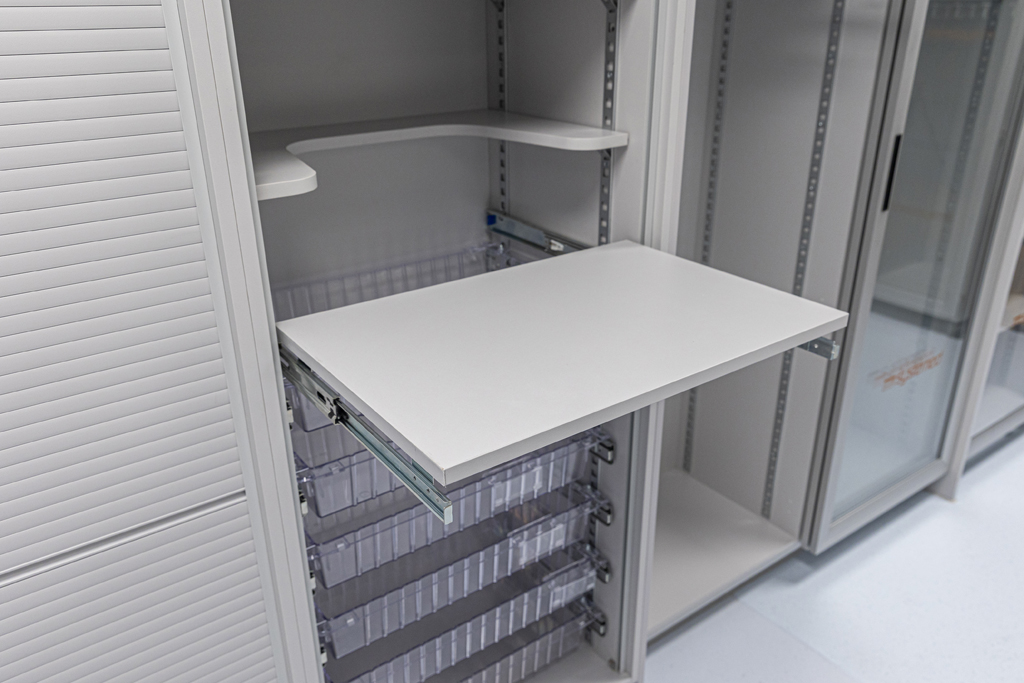
The new Systeméd Drugs Cabinet System
Collaborating with leading Anaesthetists and Healthcare professionals has contributed to the development of a new style of medicine cabinet that has been designed to improve medication organisation and drastically cut down on waste.
Healthcare professionals have identified that there are some simple but effective changes that can be made to reduce the incidences of the incorrect drugs being administered. The Systeméd drugs cabinet system takes this forward and offers a range of benefits that will ultimately reduce cost significantly over the product lifecycle.
> Improved line of sight with adjustable shelves for shorter staff
> Use of guides and dividers to keep boxes in the correct orientation
> Categorical organisation of drugs so if a picking error occurs the primary effect will be the same
> Drug boxes held closer to the front of the shelf
> Improved labelling with standardised ISO colours
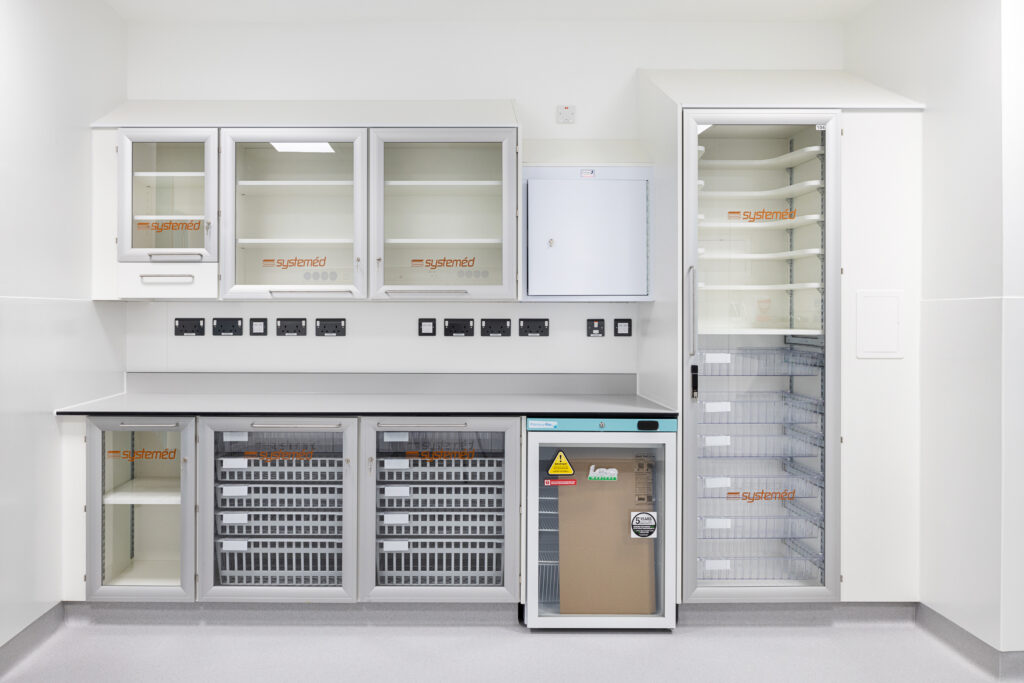
Modular Metal Drug Cabinets:
- Space Efficiency: Modular designs make better use of available space, accommodating different drug types and packaging sizes while keeping everything accessible and in order, therefore supporting stock rotation and reducing waste.
- Scalable Design: Customisable layouts allow for adaptable storage solutions, making better use of available space and allowing for expansion as needs grow – preventing the need for costly replacements or additional storage units.
- Enhanced Infection Control: Smooth, non-porous metal surfaces are easier to clean and maintain, supporting Infection Prevention and Control (IPC) standards.
- Improved Organisation: Clearly labelled, standardised internal compartments reduce search times and prevent costly medication errors.
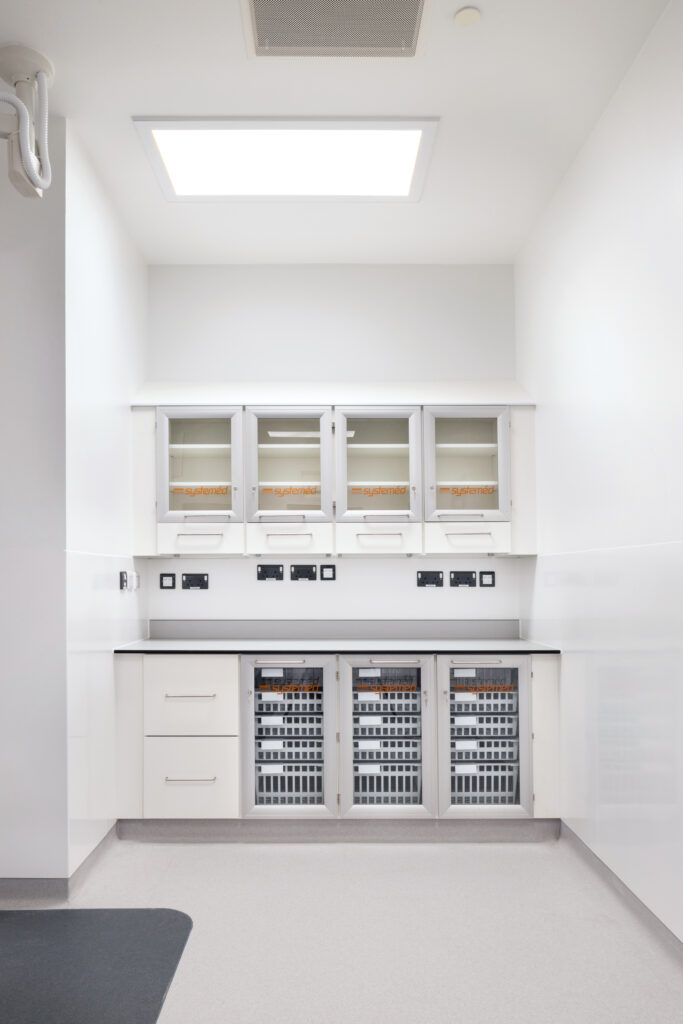
Improved Design Features
- Uniform Sizing: Standardised cabinet sizes simplify planning and ensure consistency across rooms.
- Continuous Sloping Tops: Reduces dust accumulation and simplifies cleaning routines, contributing to better hygiene and reducing the risk of contamination-related stock losses.
- Secure, Adjustable Shelving: Supports various drug storage needs while maintaining clear visibility of all medications.
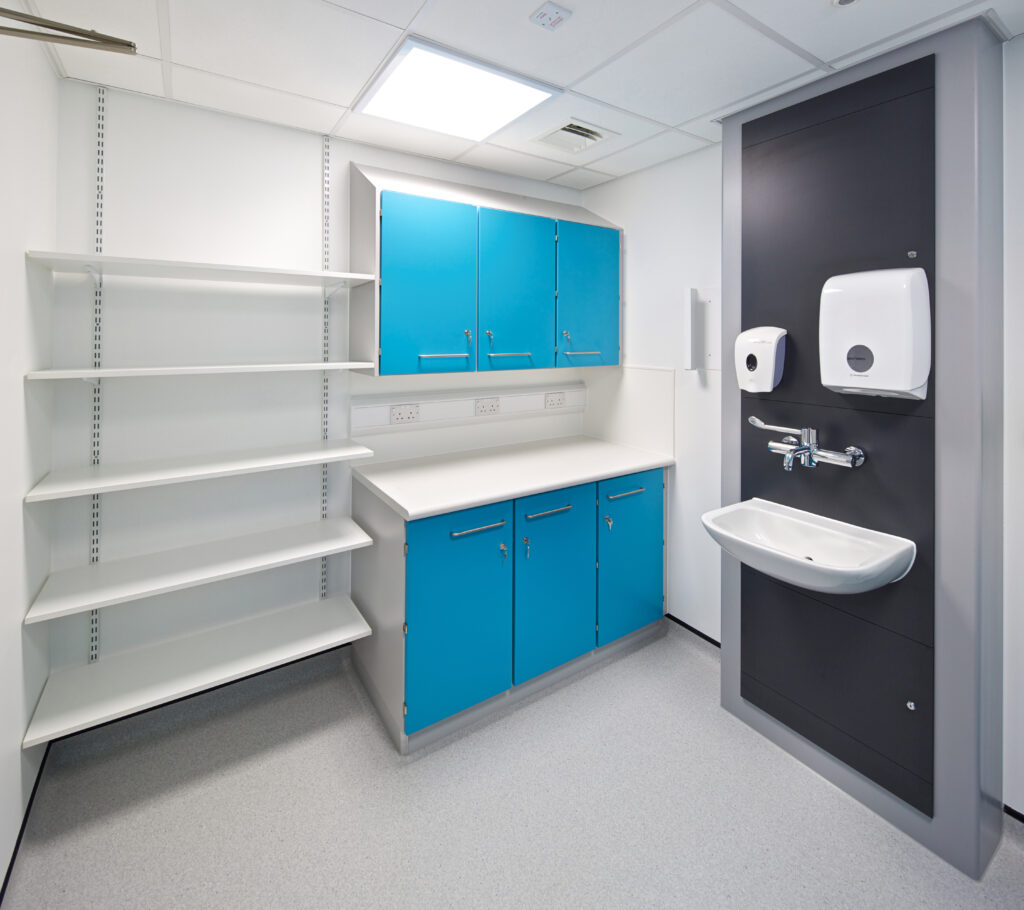
Meeting HBN 14-02 Requirements
Healthcare Building Note 14-02 outlines critical guidance on the design of storage solutions, with focus on metal cabinets for secure, compliant medication storage. The new modular metal cabinet designs align with these requirements, offering:
Robust Construction: Durable metal materials for long-term use and enhanced security.
Locking Options: Compliant with Controlled Drugs (CD) safe requirements, supporting secure storage.
Ergonomic Layouts: Designed for practicality without sacrificing IPC needs.
Designing a Typical Clean Utility Room Layout
While metal cabinets are recommended for the storage of medicines, they are more expensive than laminate faced cabinets and don’t have to take over the whole room. A balanced design – mixing metal with other materials – creates a more practical space and helps keeps costs lower. The new modular metal cabinets integrate seamlessly with this approach, maintain efficiency without compromising compliance – and keeping long-term costs in check:
Ease of Cleaning: Metal surfaces in high-touch areas promote cleanliness.
Non-Metal Features: Incorporating non-metal elements supports flexibility and cost-effectiveness where full metal construction isn’t essential.
Optimised Space: Thoughtful layouts ensure staff can move quickly and safely during drug preparation.
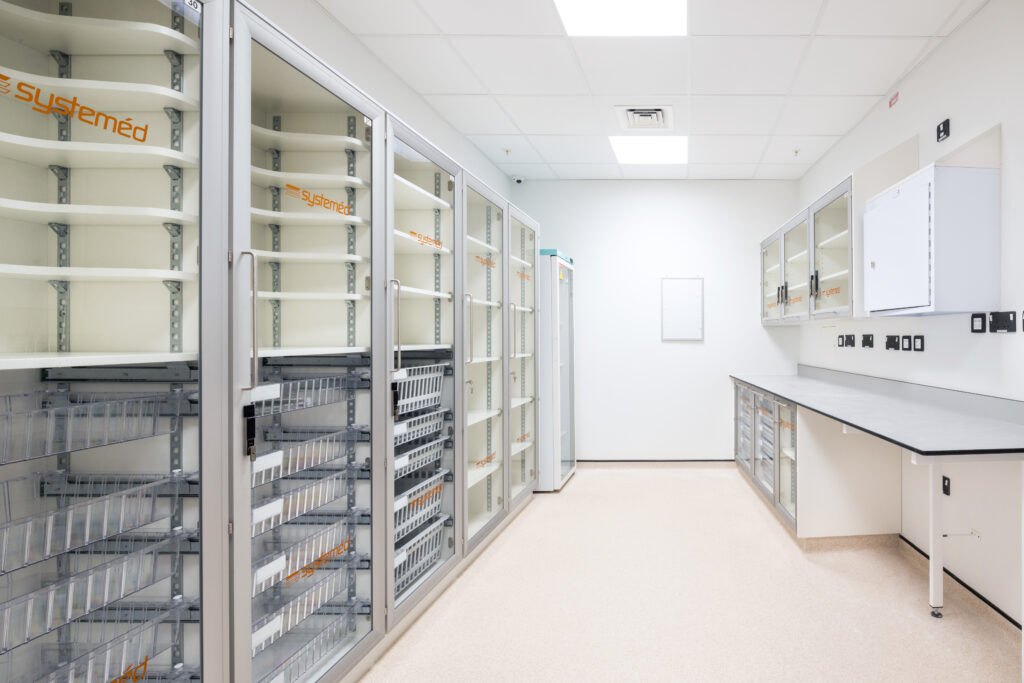
Navigating Compliance and Conflicting Requirements
One of the biggest challenges healthcare facilities faces is balancing compliance with cost and practicality. Our collaboration with leading UK Hospitals highlights key considerations:
Controlled Drugs Safe Fixing: Ensuring safes are securely fixed without compromising room layouts or accessibility.
Cost Implications: Understanding the trade-off between upfront costs and long-term gains in efficiency, safety, and compliance.
Standardisation vs. Flexibility: Creating a consistent layout to reduce errors while allowing adaptability for future needs.
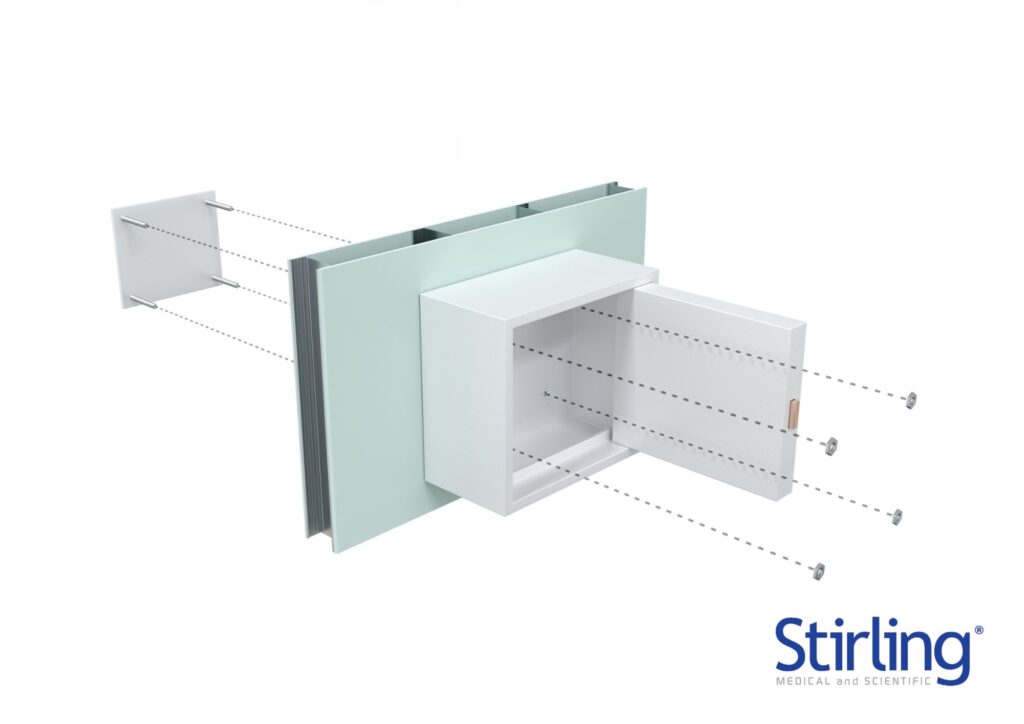
Want to experience these storage systems first-hand?
Visit our London showroom to explore the full Systeméd range. Our team will be happy to walk you through the options and help you get it right first time for your clinical environment.